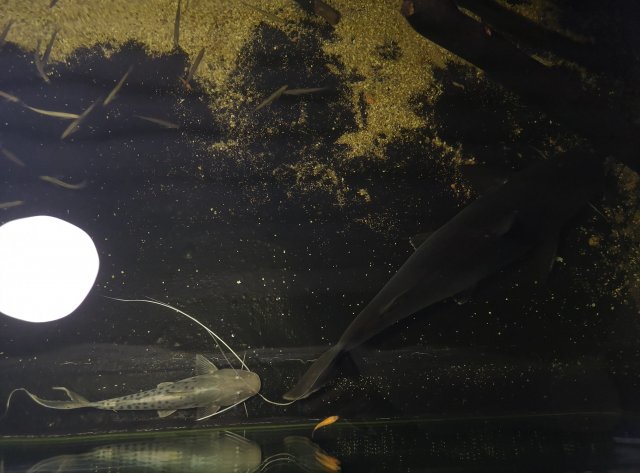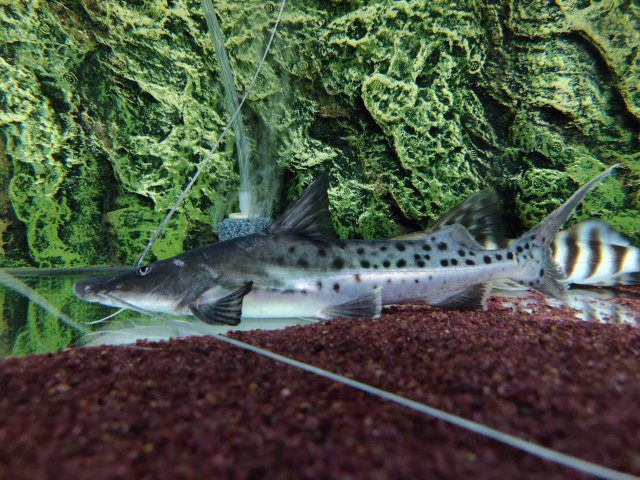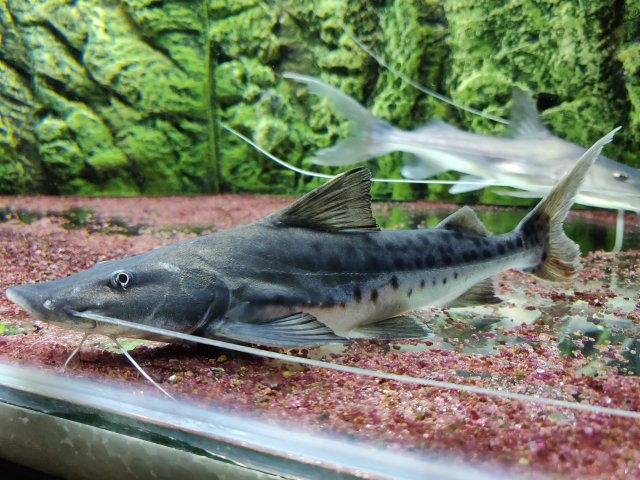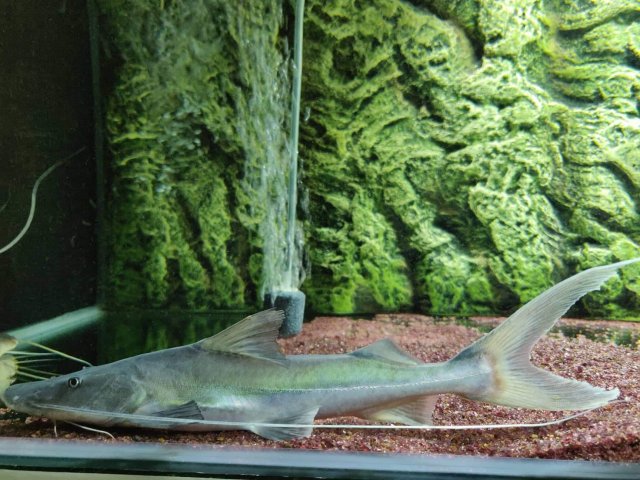I appreciated reading Moe's analysis of the snout differences.
And I thank you for the through reply, MM. Yes, I can see better what you allege with respect to the snout having a slight kink point, which is closer to the snout tip in younger fish in your photos (excluding the obviously damaged specimen of Phil's) and moves up the skull / upper jaw in older fish.
Seeing how you are a skillful artist, you must have a good eye for lines and discerning straight lines from curved lines, etc. So this adds some weight to your analysis too.
My three comeback points are as follows.
[1] The angle of the photo probably makes a difference, making the change in the snout slant angle more discernible or less discernible. As an example, you can compare the Suriname adult in the above photo and the Suriname adult on the bottom of your post #36, page 4. The kink and the change in the angle of the slant of the snout of the specimen in post #36 is pretty much washed out because this specimen was photographed just a tiny bit from above and it was not a perfect side shot, as was that of the specimen above.
The change in the slant is hard to see even in the perfect side shots, so a slight departure from a perfect side photo interferes badly.
[2] While the origin of the fishing photos of the adults is more trustworthy than less, I am speaking of the photos you borrow from online media, the origin of the little guys in our tanks and in our hobby is less trustworthy than more. In fact, there are reasons to not trust it much at all. Consumers, pretty much all of them, don't care about the exact origin of their purchased fish, so suppliers don't either. Another example: If Suriname piraiba cost more than Peru, than misrepresentation becomes plausible with the goal of increasing the profits vastly. People catch on to that like nothing else and everyone involved easily (albeit wrongly) finds a justification of their fraudulent activity.
This point goes back to my assertion that the analysis could have a shot at reliability, only if the origin of each point in the data bank is 100% certain and a few percent of the data that do not align with the rest are thrown out of the analysis as being erroneously identified or wrong for other reasons, such as an injury to the animal, a genetic hiccup, etc.
[3] It remains to see (keeping [2] in mind) that this kink is absent or somehow else differs in Peru / Brazil piraiba. That is if all alleged Suriname are indeed Suriname.
*****
I realize this is a mammoth task but I don't see any way around it if you aim your analysis to be taken seriously. Also, needless to say, the more data points are collected in any statistical study, the more reliable it is too. Something Moe has just alluded to as well.
And I thank you for the through reply, MM. Yes, I can see better what you allege with respect to the snout having a slight kink point, which is closer to the snout tip in younger fish in your photos (excluding the obviously damaged specimen of Phil's) and moves up the skull / upper jaw in older fish.
Seeing how you are a skillful artist, you must have a good eye for lines and discerning straight lines from curved lines, etc. So this adds some weight to your analysis too.
My three comeback points are as follows.
[1] The angle of the photo probably makes a difference, making the change in the snout slant angle more discernible or less discernible. As an example, you can compare the Suriname adult in the above photo and the Suriname adult on the bottom of your post #36, page 4. The kink and the change in the angle of the slant of the snout of the specimen in post #36 is pretty much washed out because this specimen was photographed just a tiny bit from above and it was not a perfect side shot, as was that of the specimen above.
The change in the slant is hard to see even in the perfect side shots, so a slight departure from a perfect side photo interferes badly.
[2] While the origin of the fishing photos of the adults is more trustworthy than less, I am speaking of the photos you borrow from online media, the origin of the little guys in our tanks and in our hobby is less trustworthy than more. In fact, there are reasons to not trust it much at all. Consumers, pretty much all of them, don't care about the exact origin of their purchased fish, so suppliers don't either. Another example: If Suriname piraiba cost more than Peru, than misrepresentation becomes plausible with the goal of increasing the profits vastly. People catch on to that like nothing else and everyone involved easily (albeit wrongly) finds a justification of their fraudulent activity.
This point goes back to my assertion that the analysis could have a shot at reliability, only if the origin of each point in the data bank is 100% certain and a few percent of the data that do not align with the rest are thrown out of the analysis as being erroneously identified or wrong for other reasons, such as an injury to the animal, a genetic hiccup, etc.
[3] It remains to see (keeping [2] in mind) that this kink is absent or somehow else differs in Peru / Brazil piraiba. That is if all alleged Suriname are indeed Suriname.
*****
I realize this is a mammoth task but I don't see any way around it if you aim your analysis to be taken seriously. Also, needless to say, the more data points are collected in any statistical study, the more reliable it is too. Something Moe has just alluded to as well.






